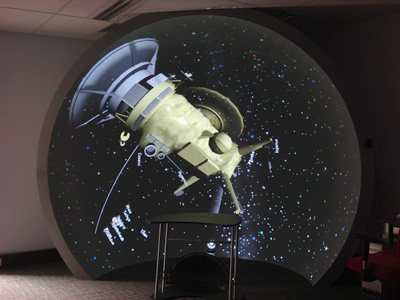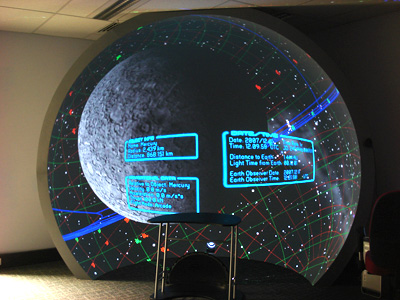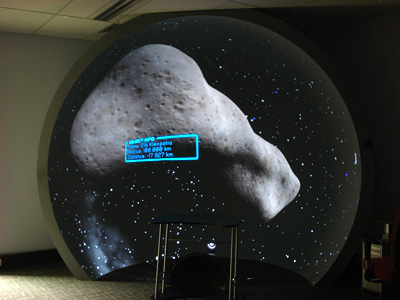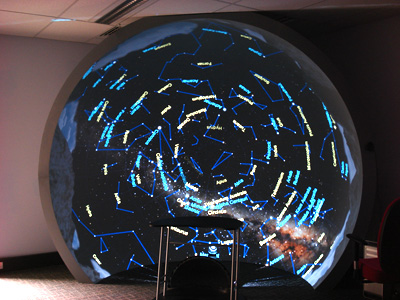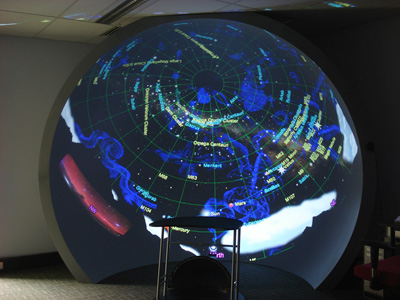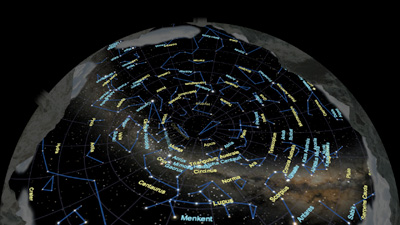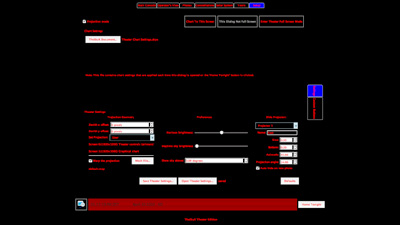Software Bisque and spherical mirror projection: A reviewWritten by Paul BourkeJanuary 2009 Spanish translation by Laura Mancini
The following is the result of an exploration of the "Software Bisque" fulldome products and their handling of projection using a spherical mirror and the warp maps that describe how to distort fisheye images for this projection technique. This is not an endorsement of the products for their intended users but simply a test/evaluation of the fisheye warping. The discussion here relates to capabilities in the "Theatre edition". The most positive aspect is that they use the standard warp maps as used by the warp-on-the-fly movie player and supported by the custom mesh generator. This means that sites who have gone through the process of creating a precise warp mesh for their configuration can use that directly with both Seeker and SkyX. The tests performed here are in an upright dome, not necessarily the natural choice for astronomy content, but in a way this shows the power of the use of warp maps, that is, the application doesn't need to know anything about the projection hardware and all tools use the same mesh warp configuration file. Seeker
The selection of the warp map could not be simpler, see image below. In the tests performed here an HD (1920x1080) projector is used and the dome and screen display are in mirror mode. 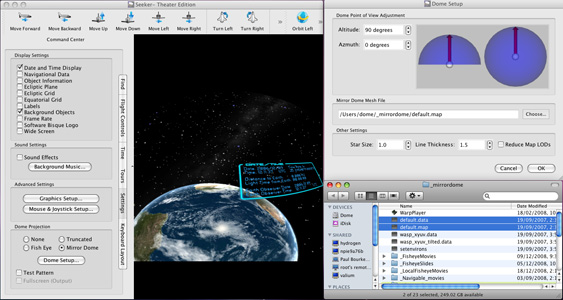
SkyX
Unlike Seeker, SkyX was operated with distinct displays (not mirrored). The control panels on the LCD display and the content fullscreen on the secondary display attached to the projector.
Notes and Issues
|

